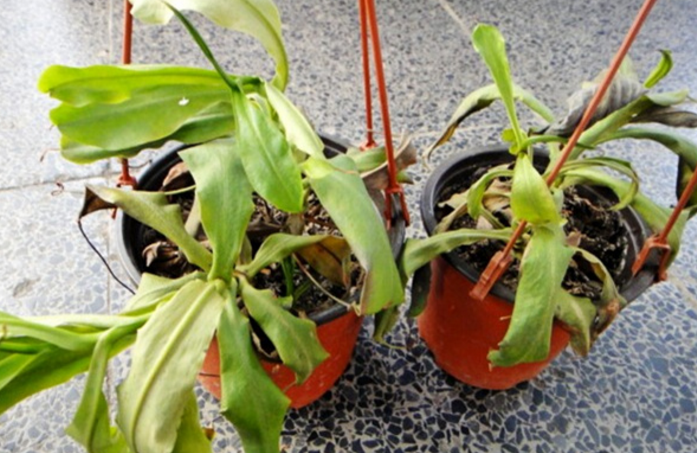How to manage Scutellaria baicalensis in the field
Scutellaria baicalensis Georgi, also known as Camellia root, is a perennial herb of Labiatae, which is distributed all over China, mainly in northwest and southwest China. Its planting area is also very extensive, in the planting process to ensure the yield and quality of Scutellaria baicalensis, the most important thing is to do a good job of field management. So how to manage the planting of Scutellaria baicalensis? The following editor brings you the field management technology of Scutellaria baicalensis Georgi. Let's have a look!

1. The seedlings are fixed
When Scutellaria baicalensis seedlings grow to about 6 cm, it is necessary to do a good job of interseedling work, in order to ensure that each robust Scutellaria baicalensis seedlings have component growth work. It is very important for the growth of Scutellaria baicalensis Georgi to control the distance between seedlings at about 7 cm to fix the seedlings. It is directly related to the growth ability and yield of Scutellaria baicalensis. When determining the seedlings, we should pay attention to the lack of seedlings to fill the mouth of the same growth of strong seedlings. Then when transplanting, we should pay attention to transplanting with soil, and pour enough fixed root water after transplanting to promote the growth of Scutellaria baicalensis.
2. Ploughing and weeding
The growth ability of Scutellaria baicalensis seedlings is relatively weak, and the growth rate is not fast, so it is necessary to do a good job of ploughing and weeding in the seedling stage. Regular intertillage can not only effectively remove weeds in the soil, prevent snatching the growth and nutrition of Scutellaria baicalensis seedlings, but also improve soil permeability and enhance soil quality. Weeding should be done at least 3 times in the first year of planting of Scutellaria baicalensis, until the weeding is stopped after the ridge is closed. Then loosen the soil before the green period of Scutellaria baicalensis in the next few years, and then weed properly according to the weeds and the growth of Scutellaria baicalensis, until the ridge is closed.
3. Water and fertilizer management
The demand for nutrition of Scutellaria baicalensis Georgi is relatively large. When planting Scutellaria baicalensis Georgi, it is necessary to apply fertilizer in time, mainly nitrogen, phosphorus and potassium, which can effectively improve the yield of Scutellaria baicalensis Georgi. Good control of the proportion of nitrogen, phosphorus and potassium fertilizer can ensure the normal growth of Scutellaria baicalensis Georgi. Attention should be paid to the amount of chemical fertilizer, not chemical fertilizer, to prevent fertilizer damage. And nitrogen fertilizer should not be applied alone to prevent excessive nitrogen fertilizer from leading to the growth of Scutellaria baicalensis and reduce the yield. Then the soil should be kept moist before the seedlings of Scutellaria baicalensis Georgi are unearthed, and watering should be controlled after the seedlings are fixed, and the water should not be too much. Pay attention to the observation of soil moisture, pay attention to proper watering when the soil is too dry, but drain in time in the rainy season or too much watering to avoid rotting roots and dead seedlings, causing diseases and insect pests.
4. Cover grass and pick flowers
After each ploughing and weeding, it is necessary to cover about 2 cm of straw between the rows of Scutellaria baicalensis Georgi, and it is best to cut up the straw to improve the moisture and fertilizer capacity of the soil. Avoid soil drought, prevent soil consolidation, control soil temperature, and ensure normal root growth. Then, for some non-seed Scutellaria baicalensis fields, the flower branches should be cut off after the budding of Scutellaria baicalensis, so as to avoid excessive nutrition consumption of the aboveground parts, seize the nutrition of the underground roots and hinder the root growth. The nutrition was concentrated on the root of the plant to improve the yield and quality of Scutellaria baicalensis.
The above is a brief introduction of how to manage Scutellaria baicalensis Georgi in the field, and we also need to do a good job in the prevention and control of diseases and insect pests in order to ensure the more robust growth of Scutellaria baicalensis Georgi, increase the yield and protect the economic benefits of planting. That's all for today's introduction. This article is for reference only. I hope it can help you all.
- Prev

How do you make the leaves brown? Why do you roll them?
Speaking of this pitcher plant, this pitcher plant has a characteristic that many plants have wood, this pitcher plant is to eat meat, to see how the pitcher plant leaves yellow? Why do pitcher leaves roll: pitcher leaves yellow how to do: yellow water, too much watering caused by yellow leaves
- Next

How to plant tendon grass
How to plant tendon grass
Related
- Fuxing push coffee new agricultural production and marketing class: lack of small-scale processing plants
- Jujube rice field leisure farm deep ploughing Yilan for five years to create a space for organic food and play
- Nongyu Farm-A trial of organic papaya for brave women with advanced technology
- Four points for attention in the prevention and control of diseases and insect pests of edible fungi
- How to add nutrient solution to Edible Fungi
- Is there any good way to control edible fungus mites?
- Open Inoculation Technology of Edible Fungi
- Is there any clever way to use fertilizer for edible fungus in winter?
- What agents are used to kill the pathogens of edible fungi in the mushroom shed?
- Rapid drying of Edible Fungi

